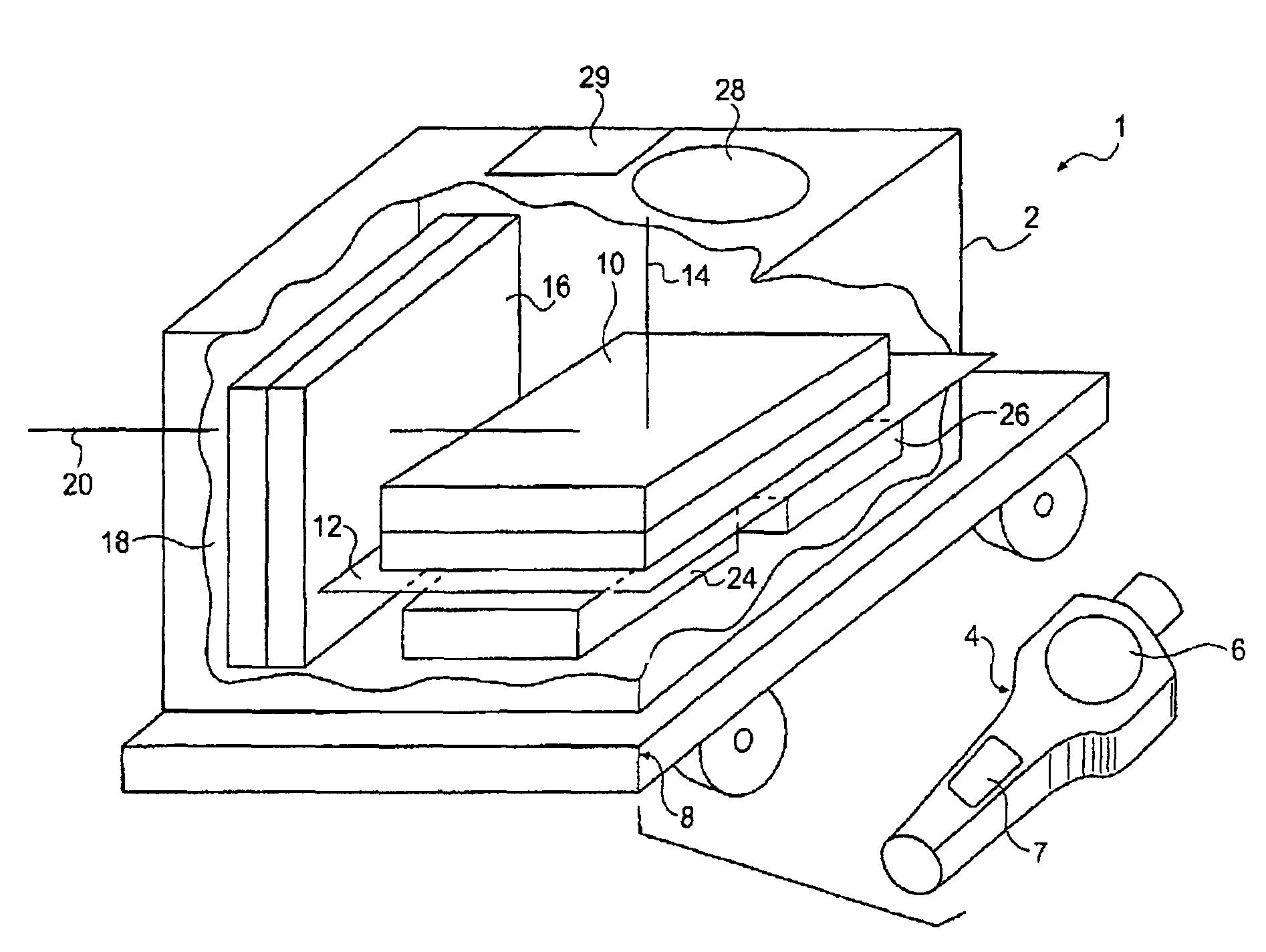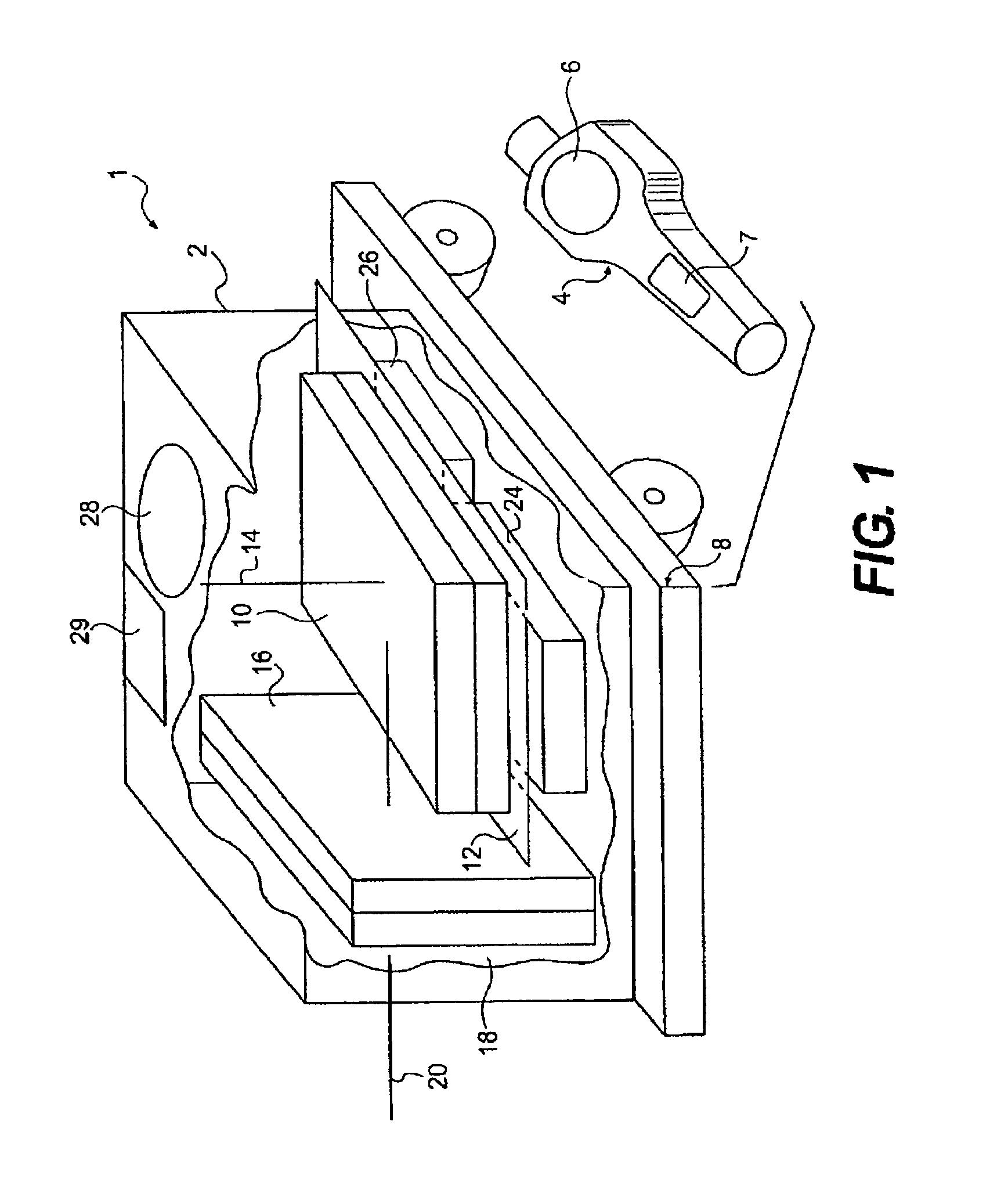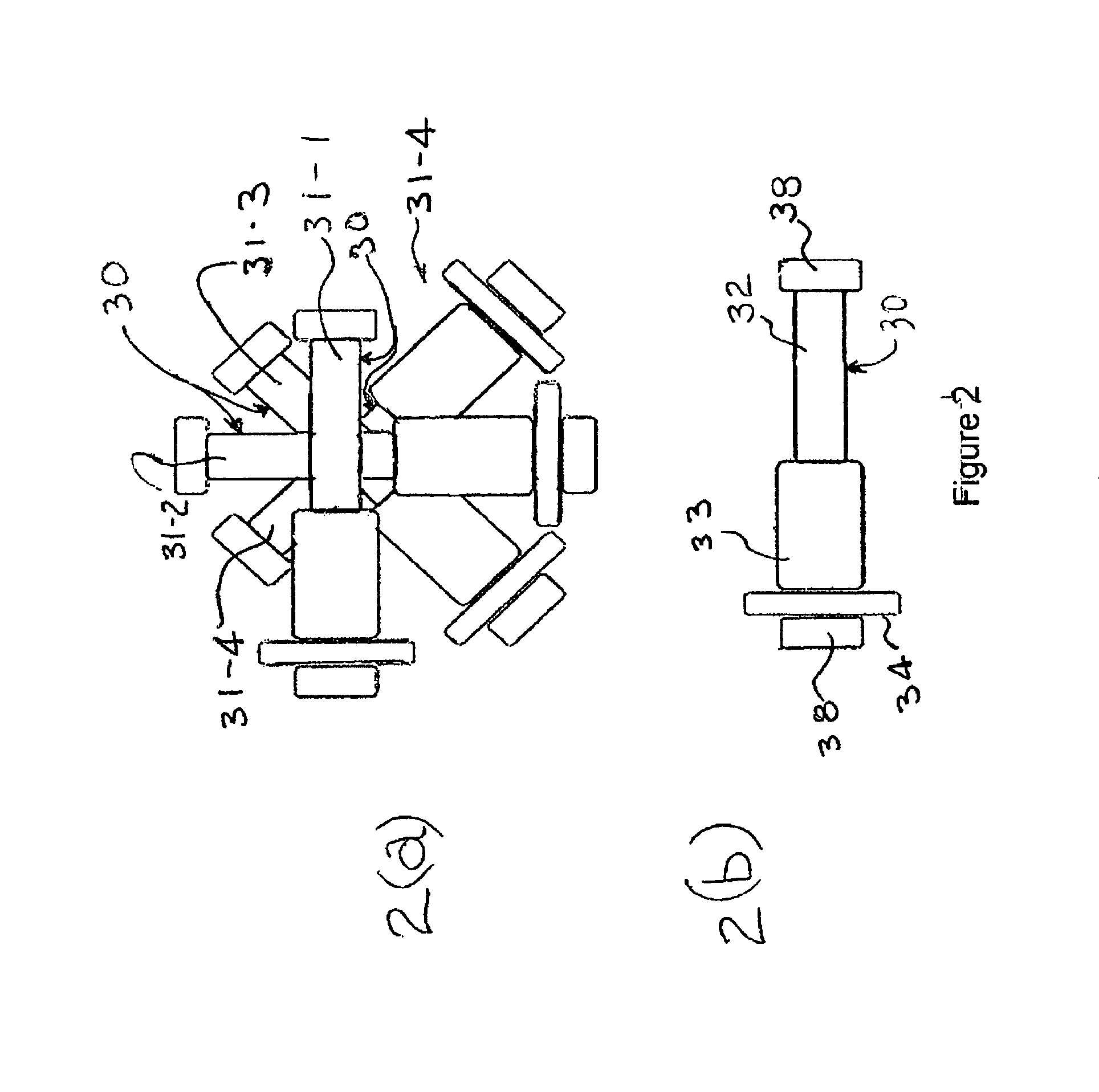Apparatus and method for detection, location, and identification of gamma sources
a technology of gamma source and detector, applied in the field of compact scintillation radiation detector, can solve the problems of lack of capability to quickly determine the location of the radiation source, lack of current information provided, insufficient in both routine inspection and other devices, known as compton cameras, capable of gamma ray azimuth detection, etc., to achieve reliable operation, high light yield, and precise energy resolution
- Summary
- Abstract
- Description
- Claims
- Application Information
AI Technical Summary
Benefits of technology
Problems solved by technology
Method used
Image
Examples
Embodiment Construction
[0038]FIG. 1 is a perspective illustration of a detector instrument 1 constructed in accordance with an embodiment of the present invention. In one form, the detector instrument 1 will detect azimuth of a gamma radiation source. In a further embodiment, both azimuth and elevation may be determined in order to provide a three dimensional representation of location of the gamma source. Additionally, as further described below, energy spectra signatures of sources may be resolved in order to identify one or more radiation sources. The detector instrument 1 may be self-contained in a housing 2. Optionally, the detector instrument 1 may further comprise a remote control unit 4. In the present illustration, the remote control unit 4 comprises a display 6 and a user interface 7. The user interface 7 may comprise switches and other control means. Commonly, the remote control unit 4 will communicate with the housing 2 by a radio frequency (RF) link. Other or additional forms of communication...
PUM
 Login to View More
Login to View More Abstract
Description
Claims
Application Information
 Login to View More
Login to View More - R&D
- Intellectual Property
- Life Sciences
- Materials
- Tech Scout
- Unparalleled Data Quality
- Higher Quality Content
- 60% Fewer Hallucinations
Browse by: Latest US Patents, China's latest patents, Technical Efficacy Thesaurus, Application Domain, Technology Topic, Popular Technical Reports.
© 2025 PatSnap. All rights reserved.Legal|Privacy policy|Modern Slavery Act Transparency Statement|Sitemap|About US| Contact US: help@patsnap.com



